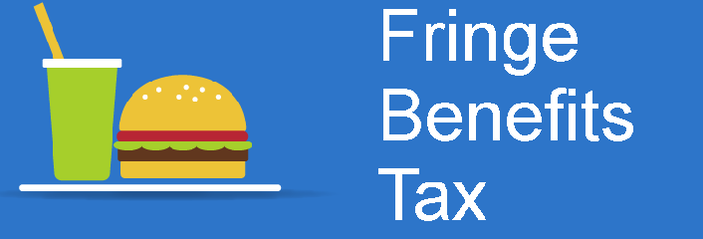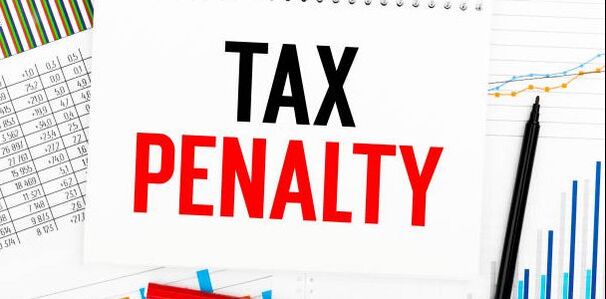|
As part of our ongoing commitment to ensuring that your business remains compliant with Australian Taxation Office (ATO) regulations, we would like to remind you of the importance of lodging your Fringe Benefits Tax (FBT) returns, particularly concerning motor vehicles owned by your business. Other examples of fringe benefits can include discounted loans, gym memberships, entertainment such as cinema tickets, and accommodation. Brief history of FBT
The Fringe Benefits Tax was introduced in Australia in 1986 as part of tax reform efforts to capture the tax value of benefits received by employees from their employers that are not in the form of cash salary or wages. This tax ensures that such benefits are subject to taxation, maintaining fairness in the tax system. The most common benefit provided is access to a company owned vehicle. The fringe benefits tax year is from the 1st of April to the 31st of March. FBT and associates It is crucial to understand that owners, directors, and their family members are considered associates under FBT regulations. Therefore, providing vehicles to yourself, your spouse, or your children is still subject to FBT. Compliance for motor vehicles When motor vehicles are owned by a business, it is crucial to report these annually to the ATO. At Preston Corporate, we employ the Employee Contribution Method (ECM) to compensate for personal usage of these vehicles as calculated by the ATO. This includes: - Personal usage vehicles where the statutory rate is treated as additional income for the business; - Operating cost or logbook method for vehicles with high business usage (e.g. sales roles); - Exempt vehicles such as dual cab utes, provided their use is limited to minor and infrequent personal trips. It is vital to note that exempt vehicle usage should be less than either 200km per trip or 700km annually. Minor deviations such as picking up children from school or occasional trips to the store are permissible. The major benefit is that to/from work trips in exempt vehicles are still counted as work related. Special exemptions for electric vehicles 100% personal usage electric vehicles are currently exempt from FBT, marking a significant shift in tax policy. Additionally, Petrol Hybrid Electric Vehicles purchased under a lease agreement before March 31, 2025, are also exempt from FBT for the term of the lease. This unprecedented opportunity allows for considerable savings on vehicle costs—buying a $60,000 electric vehicle may effectively cost you only $32,000 after considering FBT exemptions and tax and GST claims. Please note that the vehicle must be under the Luxury Car Tax Limit to qualify for these exemptions – so the Porsche Taycan is off limits! Electric vehicles and reporting The rising adoption of electric cars brings a new consideration into FBT compliance. Exempt electric vehicles must still be reported to the ATO on the FBT return, and the exempt value is included in the Single Touch Payroll (STP) finalisation at the end of the financial year. This is because electric cars affect the Adjusted Taxable Income of employees (used for Centrelink and Medicare Levy Surcharge). What is exempt from FBT? Items that are unlikely to attract Fringe Benefits Tax include: mobiles, laptops, PPE, or infrequent benefits that are $299 or less in value. ATO compliance and data matching The ATO uses sophisticated data matching techniques with state vehicle registries and analyses various tax return labels to identify discrepancies. Noteworthy is the ATO’s practice of verifying the use of vehicles claimed as business expenses through various means, including physical checks (such as attending football games and taking registration plates of utes to verify and review), social media investigations (e.g. photos of dual cab 4WD utes on Frazer Island holidays) and information requests (from e-tag companies and service records to verify log books). These measures underscore the importance of accurate logbooks and usage records. Failure to accurately complete a logbook or relevant employee declaration can result in significant employer tax liabilities: remember that it is the employer’s responsibility to ensure the vehicles are being used within the law, not the employee – examples might include a current or former employee using a company car outside company policy; but only the employer is still liable for FBT to the ATO. Why lodging FBT is crucial Lodging your FBT return is not just a regulatory requirement; it also provides legal protection. Timely FBT submission limits ATO reviews of these benefits to two years. In contrast, failure to lodge can allow the ATO to initiate reviews up to five years later. The FBT rate at 47% is significantly higher than the corporate tax rate, emphasizing the importance of compliance to avoid hefty penalties. We urge all our clients to maintain diligent records and ensure timely lodgement of their FBT returns. Doing so not only complies with the ATO regulations but also protects your business from potential future complications and financial liabilities. Even if you legally do not need to lodge an FBT return, if you provide benefits to employees, we strongly suggest that you do. This ensures that any potential FBT has been calculated and checked, and if lodged in a timely manner, reduces the audit window of the ATO. Lodgement and payment of FBT returns is due on the 25th June each year. Find out more about FBT from the ATO here. Should you have any questions or require assistance with your FBT return, please do not hesitate to contact us. Our team is here to support you in navigating these requirements smoothly, and we look forward to supporting your ongoing success. Bank reconciliations ensure the accuracy of your organisation's financial statements and helps maintain financial integrity. Get into the habit of doing it often. Putting it off can mean lost records or not remembering what transactions were for, or not noticing fraudulent transactions in time to rectify them, as well as your in-software reports not generating accurately. A bank reconciliation involves a comparison of your income and expense records against the actual bank statement records your bank has. It is a critical financial process to identify and rectify any discrepancies or errors between your internal financial records, with the transactions in the bank accounts. Bank reconciliations keep your bookkeeping accurate and can help lower your tax, alert you to fraud, and allow you to track costs. They are essential for several reasons.
Check out the below links to get a better understanding of how to reconcile your bank account transactions in Xero, MYOB (desktop or browser) and Quickbooks Online. We also offer a bookkeeping service which can be incredibly helpful to maintaining your file and preparing monthly and/or quarterly lodgements with the ATO. Get in touch with us for more information about this.
 With all of the complexities of Australian payroll, ensuring compliance with the Superannuation Guarantee (SG) obligations is a very important task. Legislation surrounding superannuation contributions requires vigilant attention and a proactive approach from businesses to avoid missing legal updates and the pitfalls of non-compliance. Read on for tips to maintain your compliance as an employer. Compliance and why it is important
A major part of payroll operations is the responsibility to ensure that employees’ superannuation contributions are calculated accurately and paid efficiently to ensure no penalties are incurred. The ATO enforces strict guidelines around this, which can open you up to significant penalties if not adhered to. When not paid correctly and on time, you are also undermining your employee’s retirement savings efforts. Another point to consider is that making payment of super for the 4th quarter of the financial year after June 30th, means you won't be able to claim that as a deduction in your tax return until the next year when it is paid. Tips to maintain super compliance
A great way to do so, is to subscribe to the ATO newsletters (simply select the topics you’re interested in). 2. Regularly review your payroll Undertaking audits of your payroll register is imperative to ensuring no errors have been made, and allows you to rectify errors as soon as they are discovered. An external consultant can be engaged to perform these services. 3. Embrace technology Utilising payroll software that is up to date with the latest legislation and requirements will help to reduce the risk of errors occurring. Automation can help with timing to ensure you are not late in processing payment of your employee’s super guarantee. 4. Record keeping Detailed record keeping is imperative for payroll operations. Ensuring compliance, and making things much easier if you are ever audited by the ATO. Always remember, even if you own the business and are the employee, you are still required to stick to the rules and pay your super correctly, as you would for any other employee. Your commitment to this issue reflects your integrity towards yourself, your business, and employees. Find out the current and historical superannuation rates here. If you are not sure you are 100% doing things correctly, or need assistance relating to payroll and bookkeeping, give our team a call on (08) 9367 4199. Need to rein in your expenses? We can help you review your current costs, find the expenses that could be cut, and keep you on top of managing your future spend. Running a business will always mean incurring certain expenses, or ‘spend’ Whether you’re a large family business or a small fledgling startup, there will be costs, overheads and supplier bills that mount up – and these expenses will gradually chip away at your cash position, making it more difficult to grow and make a profit. So, what can you do to reduce your spend levels? And what impact will this have on your overall margins, profits and ability to fund the next stage in your business journey? Get proactive with your spend management
Spend management is all about getting in control of your expenses – and, where possible, aiming to reduce the level of costs and overheads that you incur as a company. Why does this matter? Well, excessive spending eats into your cashflow, reduces your profit margins and stops you from achieving the profits that you’re capable of as a business. So if you can get proactive with your spend management, you can actually make your company a far more financially productive enterprise – and that’s great for your overall business health. What can you do to reduce spend and slim down your company expenses? Here are some key ways to reduce expenses: - Reduce your overheads – Your overheads are the unavoidable costs of running your business, producing your products or supplying your services. If you have a bricks and mortar premises, these overheads will include rental payments, utility bills and even the cost of paying your staff. Drill down into the numbers and see where there are opportunities to reduce these overhead costs. That could mean moving to smaller premises, or reducing the size of your workforce, to reduce payroll expenditure. - Put limits on staff expenses – If your employees can claim expenses, or buy raw materials and equipment with the company’s money, these costs can soon start to rack up. It’s a good idea to put a spending limit in place, so each staff member can only spend up to an agreed amount. Having a clear expenses policy helps, as will training up your staff in good spend management techniques. Specialist expenses card software allows you to quickly set spend limits, track expenses and pull your expenses data through to your cloud accounting platform for processing. - Look for cheaper suppliers – If you can reduce your supplier costs, this will go a long way to bringing down your overall spend. If you’ve been with certain key suppliers for years, look around for new quotes, look at current market prices and see if you can negotiate better deals. And if your old suppliers aren’t flexible enough, try swapping to newer, more eager suppliers who will be willing to meet you in the middle on price. - Make your operations leaner – the bigger your operational costs are, the less margin you’ll make on your end products and services. One way to resolve this is to aim for a ‘lean approach’, paring back your staff, resources and operational complexity to the bare minimum. By making the business as lean as possible, whilst still delivering the same output, you keep your revenue stable, but reduce the spend level that’s eating into your cost of goods sold (COGS). The smaller your COGS, the more profit you make on each unit or sale – and that means better cashflow, more working capital and bigger profits. - Explore tax reliefs – Tax costs are an unavoidable expense when running your business, but it’s worth exploring which tax reliefs, grants or other business benefits you may be eligible for. For example, research and development (R&D) tax credits may be available in your field to help cut your corporations tax expenses. Talk to us about improving your spend management If you’d like to get in control of your expenses, we’d love to chat. We’ll review your current costs and highlight the key areas where expenses can be cut. Get in touch to start reducing your spend. As a new year begins, we often make new year resolutions for our personal goals, however, planning for the new year in your business is also very important. What business goals do you want to accomplish in 2023? You may be looking to expand your business or create more time for yourself. Have you backed up your resolutions with measurable tracking and accountability to ensure their success? Our key tips
Envision your future: Reflect on what you truly want from your life and how your business can help you achieve those aspirations. Consider where you want your business to be in the next five or ten years. Having a clear endpoint in mind will make it easier to set goals that align with your vision. Set measurable goals: Vague goals can be challenging to track and evaluate. Instead, focus on setting goals that are measurable. Think about the key metrics you already monitor in your business and how you would like to see them improve. For example, aim for a 3% increase in net profit year-on-year, a 2% reduction in expenses, or acquiring two new customers per month or grow your prospect database by 50%. If you set specific targets, you can easily track your progress and make adjustments as needed. Develop a plan for each goal: Once you have identified your goals, it's crucial to create a plan of action to achieve them. This can be as simple as jotting down your ideas or engaging in a brainstorming session with your team or advisors. Having a well-defined plan in place will help you stay focused and motivated to follow through. Monitor your progress regularly: It's essential to regularly check in on your progress towards your goals. Set reminders on your calendar or align your monitoring process with your invoicing cycle. By consistently evaluating your progress, you can identify any areas that need improvement or come up with fresh ideas to help you reach your targets. Celebrate your achievements: Celebrating milestones along the way is crucial for maintaining motivation and momentum. Plan a reward for yourself when you achieve a significant goal. It could be treating the team to a morning tea, having a day out of the office together or planning an event for the end of the year. Choose something that brings you joy without breaking the bank. We can help you with the strategy and identifying the information you’ll need to track, so you can monitor your progress. There are many different metrics you can use to do this, and we can help you in setting up your Key Performance Indicators (KPI). Contact our Business Advisor, Michele Rawlins, to discuss the future of your business.  Christmas Cheer Cheesecake INGREDIENTS 200g pack of digestive biscuits - 85g unsalted butter, melted - 500g cream cheese - 100ml thickened cream - 3 eggs - 250g caster sugar - 1 tspn vanilla essence - 300g sour cream - 150g natural yoghurt - 300g frozen cranberries - 2 tbspn port - 1 tbspn lemon juice - 1 tspn ground ginger - 8 small rosemary sprigs dusted with icing sugar - METHOD
 Putting important company policies in place, and keeping key rules and guidelines official, helps your workplace be productive and safe and gives employees and customers confidence. You can also address the behaviour you hope to see from your staff at social events in a policy. Here are 3 policies every company should have. Putting important company policies in writing makes good business sense. It compels you to think about how you want your workplace to run and the things you want to emphasise, and it makes these rules and guidelines official so that your employees know what you expect from them. It is also a good reflection of the values you want to instill in your business which can be helpful for employees and customers alike.
While you don’t need a policy on absolutely every aspect of the company’s workings, there are some key policies you should have to provide information on responsibilities and rights in crucial areas. The aim is for everyone to understand and adopt them, so keep them as simple as possible. Below are the 3 policies every company should have written down and easily accessible. Work health and safety Having a work health & safety (WHS) policy is all part of meeting your obligations to manage workplace risks and ensuring your workers’ health & safety. The policy should clearly describe how your workplace will be kept out of harm's way and healthy, the procedures necessary to achieve this, and what all your team members need to do. You may need separate policies for different departments; eg. Factory and office. WHS information must be shared with workers, which helps ensure they are engaged in WHS matters. It also helps reduce absenteeism, increases productivity, and gives your employees confidence in their place of work and management. Bullying and harassment Part of your obligation to keep workers safe and healthy is making sure your workplace is free from bullying, harassment, and discrimination. A bullying and harassment policy should define and document how issues are reported, and how the business will respond and seek to resolve them (by law, you must investigate and support the person affected). Having an official policy sets the best example of what is acceptable and clarifies the rights and obligations of both employees and their managers. Code of conduct & social event expectations Once you’ve covered the essential policies, you can develop a code of conduct that covers a range of general expectations for everyone in the business. The scope of the code will be determined by the particulars of your business and doesn't have to be complex, but should articulate the company’s values and align standards of professional behaviour with its principles and mission. It should also cover key areas like the use of company assets, protecting confidential information, avoiding conflicts of interest, and complying with laws and regulations. This is also where you can cover the expected behaviour of your staff at the company Christmas party and other social events. While Christmas parties don’t have to be either a massive bash or a boring, box-ticking exercise, we’ve got some tips to ensure it’s fun as well as being healthy and respectful. Company Christmas parties are things of legend. Everyone knows the stories about employees that took the opportunity to let their hair down just a little too far. These days, most businesses understand that letting staff cut loose at the Xmas bash poses potential health & safety and even legal risks. So, here are a few important things to keep in mind when you're planning and attending this year's annual party:
Remember, if you plan and communicate well, the Christmas party will be a time for you and your team to celebrate together in a relaxed setting with smiles all round. There are many policy and procedure templates available online to download, but be sure you are using a source that is right for you. Have they been prepared with Australia (or your location) and related laws in mind? Be sure to go through the templates with a fine-tooth comb before setting these in stone. As a business owner, there are many aspects to consider when determining how much to pay yourself, depending on how much your business can afford, what type of entity you operate, market pay rates, and whether reinvestment could pay dividends. Being the boss means you get to make all the big decisions about your business – including how much to pay yourself in wages, salary or drawings.
As the owner, you might need to underpay yourself in the early stages of building your business, so that you can reinvest the profits to grow. But your time is valuable – and you need enough money to pay the bills. So how can you balance this and find the right level of pay? It has to be enough to keep the mortgage paid, while also building a thriving business. Here are a few questions to ask yourself:
We’ll help you run the numbers We can help you figure out how much your business can afford to pay you, analyse the potential gains of a business investment, or weigh up the pros and cons of hiring someone to help you. Please note that there are some business arrangements that are required by law to pay themselves a certain amount/percentage of their income. If you choose to get in touch about this, we will review your circumstances entirely to ensure you are meeting these requirements. Get in touch to arrange a meeting with one of our experienced business advisors, we’d love to hear from you. Do you offer your employees benefits in addition to salary and wages? If so, you may need to report fringe benefits tax (FBT). Fringe benefits can help employees reduce their taxable income, but you need to take care of the admin. Keep reading below and get in contact to learn more. Benefits provided to employees or their associates in addition to salary or wages are known as fringe benefits. These benefits are paid for by the employer from pre-tax earnings, making the provision of benefits attractive to employees as it may reduce their taxable income while receiving payment in other forms.
Fringe benefits tax may apply based on the type of benefit provided. Tax is payable because the benefits are a different form of payment by an employer instead of salary and wages. The tax is calculated on the taxable value of the benefit, which reflects the grossed-up salary the employee would have had to earn to pay for the benefits from post-tax earnings. Employers can generally claim a tax deduction for the benefits and related FBT payable. Types of Benefits There are many different types of fringe benefits employers may provide to employees. These include:
FBT Administration The fringe benefits tax year runs from April 1st to March 31st. You must then include the reportable amount for each employee on their Single Touch Payroll finalisation by July 14th, so it flows through to their annual income statement. As with all business transactions, keeping accurate records is essential to determining whether FBT applies, and how much needs to be included on the employee's income statement, if any. If you're interested in seeing how fringe benefits might apply to your business, talk to us about FBT registration and administration. We can advise on the types of benefits available, how much tax is payable or how to reduce the FBT liability. We can also help to get your bookkeeping software set up to make record keeping easy. Stay up to date with FBT news Keep up-to-date on FBT public advice and guidance and other news with the ATO's quarterly FBT Bulletin. You can subscribe to the bulletin by emailing [email protected]. With the ATO shifting its focus on taxpayers with outstanding tax lodgments and debts, find out how to avoid being penalised at the increased penalty rates in 2023–24. Announced as part of the 2023–24 Federal budget, increased funding has been provided to the ATO to scrutinise taxpayers who have high-value outstanding debts of over $100,000 and aged debts older than two years where those taxpayers are:
After a recent increase in January 2023 from $222 to $275, the Commonwealth penalty unit rate has witnessed yet another hike from 1 July 2023 and currently sits at $313 per unit. This means that if you fall behind on your tax lodgements you can expect the financial penalties to increase substantially. Penalties may be levied on late lodgements of returns and reports that include but are not limited to:
Small business lodgment penalty amnesty The ATO is encouraging small businesses that have overdue income tax returns, fringe benefits tax returns or business activity statements to take advantage of their lodgement amnesty that will run until 31 December 2023. Also announced in the 2023–24 Budget was the amnesty that applies to tax obligations that were originally due between 1 December 2019 and 28 February 2022. To be eligible for the amnesty, the small business must be an entity with an aggregated turnover of less than $10 million at the time the original lodgement was due. Small businesses can avail the lodgement penalty amnesty and lodge eligible overdue forms before 31st December 2023 and the ATO will automatically remit any associated failure-to-lodge penalties. Next steps To avoid being penalised at the revised higher rates for failing to lodge returns and reports, ensure you collate and send us all necessary information well before the lodgement due date so we can complete your lodgements on time. When payments are not made on time, the ATO can choose to add on General Interest Charges (GIC) to the owing amount(s). Each quarter the GIC rate is updated by the ATO. For July - September 2023, it is at 10.90% - the highest it has been in 10 years. If you anticipate delays, best practice is to engage with the ATO and tell them your situation. We can assist you with requesting an extension in lodgment due date(s), applying for remissions or if necessary, taking out a payment plan to pay off your tax debts. Remember - give us a call with any ATO queries and we can help. |
AuthorHelpful articles written by our knowledgeable and experienced team. Archives
May 2024
Categories |
Need an appointment?
Looking for help with your business? Need more time to focus on what matters to you? Need advice on growing your business? Preston Corporate provides a wide range of services designed to give you the freedom and the growth you seek.
Copyright © 2022
Located on the Ground Floor, Suite 1, 8 Preston Street, Como WA 6152
Liability limited by a scheme approved under Professional Standards Legislation
Located on the Ground Floor, Suite 1, 8 Preston Street, Como WA 6152
Liability limited by a scheme approved under Professional Standards Legislation








 RSS Feed
RSS Feed
